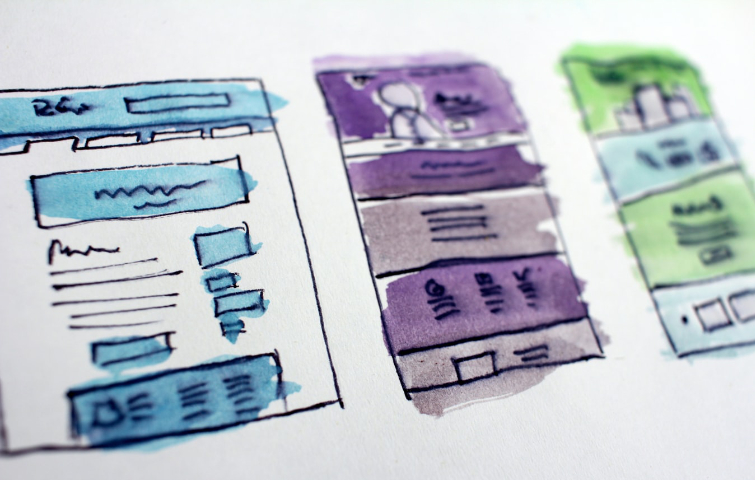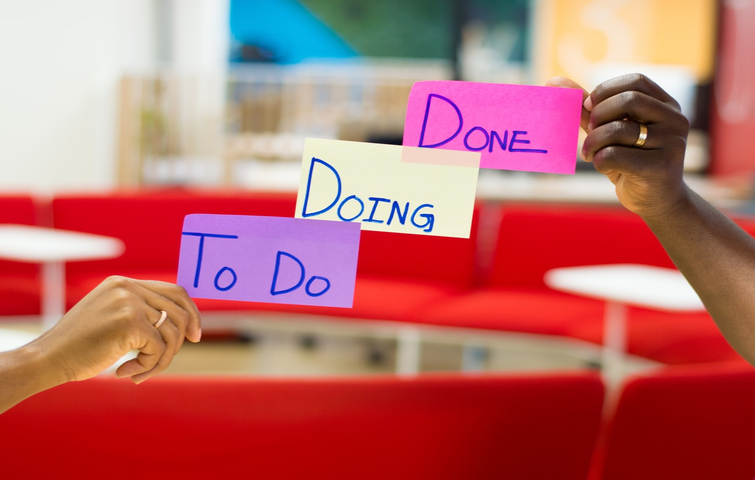“If it was not difficult to handle a team on the premise, now I will have to do it remotely.” frustrated with the news that his company was shifting completely to remote work from the next month onward, Vicky started yelling.
“How am I supposed to bring the new designer onboard who is set to join next week? Who will make him understand the work processes and the kind of style that we follow in our designs.” he continued expressing his frustration.
Vicky is not the only one going through this situation. There are countless others who have been forced to switch to remote work because of the entire COVID situation. To many, this might come as a new experience altogether, whereas the reality is a little different.
Remote work was brought into the limelight by COVID-19. However, close to 5 million people, or roughly 3.6% of the entire workforce, were functioning remotely much before the pandemic. Software development outsourcing is probably one of the best examples of remote working, where businesses are ready to invest in the skillset of a person without worrying about where they are located.
Of course, there are some amazing benefits of working and managing teams remotely. That’s why millions of people were doing it when given the opportunity. Let’s take a look at those.
The one advantage that remote workers have over their regular, in-office counterparts is, of course the option to work from anywhere. There’s no denying that working from a cozy and comfortable place, as per your liking, makes you more creative and productive, as compared to working in a usual office space.
This comes as a no-brainer. Since you are working from home, it obviously means that you no longer have to worry about the time and effort that was earlier being invested in daily commuting to the office. This also means that you will be saving some extra money too.
Remote work also means that you have this opportunity to establish a better work-life balance. The extra time you are getting by not having to commute can be used to spend with family, learn new things, or do whatever gives you a break from the monotony of work.
Although this varies from profession to profession, if you are working as a freelancer, you have the flexibility to pick working hours of the day in which you feel the most productive. Even when you are working as part of a team, you still have the option to choose when to work and complete your tasks, leaving aside only those times when you have to collaborate with others in your team.
As rewarding as it might sound, the fact of the matter is that managing a remote team is easier said than done. It comes with its own set of challenges. Let’s take a look at those challenges to know about them better:
When you work in a regular office, it becomes quite easy to establish a hierarchy. However, it becomes equally challenging to establish the same when you are working as part of a remote team. You require a structured approach and the right blend of technology and creativity to establish a hierarchical structure in an organization. This is why it becomes all the more challenging.
Another challenge associated with remote working teams is tracking progress at every level. Who’s doing what? When was the project due? What’s the latest status of this task? All these and a lot more are common questions that managers can easily get answers to by going to the desk of their team members or call for a quick meeting. However, you don’t have that luxury when it comes to remote working. Thankfully, some of the best time-tracking software solve these challenges.
Communication forms the backbone of an organization. But it takes a lot of effort to maintain a smooth flow of communication when working remotely since you have to rely on multiple channels for different types of communication. For instance, chat for regular office conversations, video calls for meetings, online discussions for brainstorming, and so on.

Of course, one of the most important, if not the most important, things in the workplace is its environment. In regular offices, the routine chit chats, office events, and similar other interactions contribute towards giving the place its own vibe. When you are working remotely, there is no scope for in-person interaction, and hence the possibility of a strong team vibe is also diminished.
The combined effect of all these factors results in the crippled growth of the team. No one can expect a team facing all the challenges mentioned above to function normally, forget about working productively.
As you can see, there is a long list of challenges associated with managing a remote team. Those challenges become even more when you are dealing with design teams since the work involves a lot of creativity and technical expertise. That being said, like everything else, there’s a solution for these challenges too. In the next section, we are going to talk about some tips to manage remote design teams.
If you are facing similar challenges when managing a remote design team, I am going to share seven powerful tips that will help you in the process:
One of the first things you need to do is to have a streamlined workflow in place to efficiently manage a remote design team. Workflow ensures that everyone knows a clear direction that they need to follow when carrying out their work.
Having a workflow also establishes a clear work structure, so onboarding of new members becomes easier as you already know what role that person is going to fit it. Here are some tips that can help you build a work structure or establish a workflow that will eventually lead to clarity in work processes while working remotely:
●Define team roles; everyone must have a designated role and have clearly specified guidelines to perform everything that comes with that role.
●Create a workflow; by dividing the project into stages, with individuals assigned to every task based on their roles (expertise), you can keep an eye on how things are progressing even while working virtually.
●Break large tasks into smaller subtasks; this helps in managing things better, as you can clearly see which sections of the task are being worked upon and by whom
●Daily check-ins; it has to be part of your work structure so that team members don’t feel left out. Besides, it also ensures a sense of accountability is maintained in the team.

Designing work means a lot of information exchange. And, it is a no-brainer that the successful completion of a design project depends largely on the flow of information. Right from the ideation phase, when you sit with the client to discuss their expectations to the execution phase where you start working on the design, you need to have a clear exchange of information.
Besides this, there’s always a constant exchange of mockups and other relevant information throughout the project until you reach its completion stage. It saves a lot of time and effort if you have a central place for all of this.
Now, the easiest way to get rid of this challenge is to invest in project management software like ProofHub. The good thing about project management software is that you have a hub for all your tasks, information exchange, collaboration, and tracking things while working remotely.
Collaboration is the key to beautiful designing. Constant exchange of ideas is what leads to out-of-the-box designs that are not only pleasing to the eye but also functionally effective.
For managers who are looking to get the best of their design teams when working remotely, it becomes imperative to have well-defined routes of collaboration. What this means is that you:
● provide them with a virtual space where they can share ideas,
● simplify the feedback sharing and review process,
● and ensure that you are available for any brainstorming or discussion sessions whenever they feel the need for it.
As engaging and inspiring as it might look, designing can prove to be a stressful job. Being the manager, you need to build a rapport with your team members so that they can communicate and share ideas.
This is important because communication boosts inspiration. Besides, it also works as a stress-buster. Since work-stress is one of the most common issues for remote workers, it should be your priority to provide your design team access to all that’s required to streamline communication.
For instance, being available in a chat tool throughout the working hours is one thing that you can do. Daily video check-ins and informal chit chats such as virtual coffee breaks is another great way to keep them connected. Activities like these keep the mind fresh and help replenish the creativity that is easily lost due to social isolation that’s commonly associated with remote working.
Wrong expectations can hurt big time, be it in terms of work culture, task requirements, or deadlines. When you are managing things remotely, you cannot afford to take the risk of unclear expectations to ruin your design projects.
This is where having clear, well-defined work policies that establish the expectations from an employee become important. As the leader of the herd, you need to pen down the important things that a team member must consider when working, the standards that you have drafted in terms of work ethics, guidelines, client communication, and so on.
Moreover, clearly setting what the client expects from the work, and doing it at the right time, is the key. The process for establishing these expectations begins right when you hire them. You need to be skillful with your written and verbal skills to communicate the expectations clearly and document them as well so that everyone can refer to them for the future.
One of the perks of working from home is that you get the opportunity to work in an environment of your own choice, and at the time that you feel more productive. If you are not flexible to provide that flexibility to your team members, you are taking the most important aspect out of remote work.
Focus more on getting the job done instead of getting your employees to spend maximum time at work. You need to remember that in the end, it’s the results that matter, not the time spent.
Be strict with deadlines, but not with the number of hours spent at work. Such an environment kills productivity and creativity.
For remote teams, there is no other best friend than technology. Stay updated on the latest trends in technology so that you can make the most of collaboration tools, project management apps, and so on.
Technology can help you eliminate all the challengesthat arise because of your team being scattered at different locations. It is up to you whether you put the efforts to leverage that technology.

For instance, there are a plethora of design project management tools available in the market. You can try them and pick the one that offers the right solution. From assigning tasks to collaborating with team members to review files, track time, and whatnot - you can get all these features in one place with modern project management tools for designers.
Another way to overcome these challenges of remote work is using time trackers like WebWork Time Tracker.
The latter makes remote work a breeze. Its features like screenshots and activity levels give you a detailed idea on how a project is progressing.
The job of a manager is to not just assign tasks and track the team; it is more of a leadership role where you are expected to mentor the talent of the team.
Remember, management is nothing more than motivating people. Now, how effectively you are able to motivate your remote design team depends entirely on three things:
● The effort you put into it
● The rapport you build with them
● The technology you bring on board to solve their challenges
If you are able to do these three things to the best of your ability, you will certainly have a successful design team.

The big question is - are you ready to invest yourself in these three?
 Mockplus RP
Mockplus RP
A free prototyping tool to create wireframes or interactive prototypes in minutes.
 Mockplus DT
Mockplus DT
A free UI design tool to design, animate, collaborate and handoff right in the browser.
